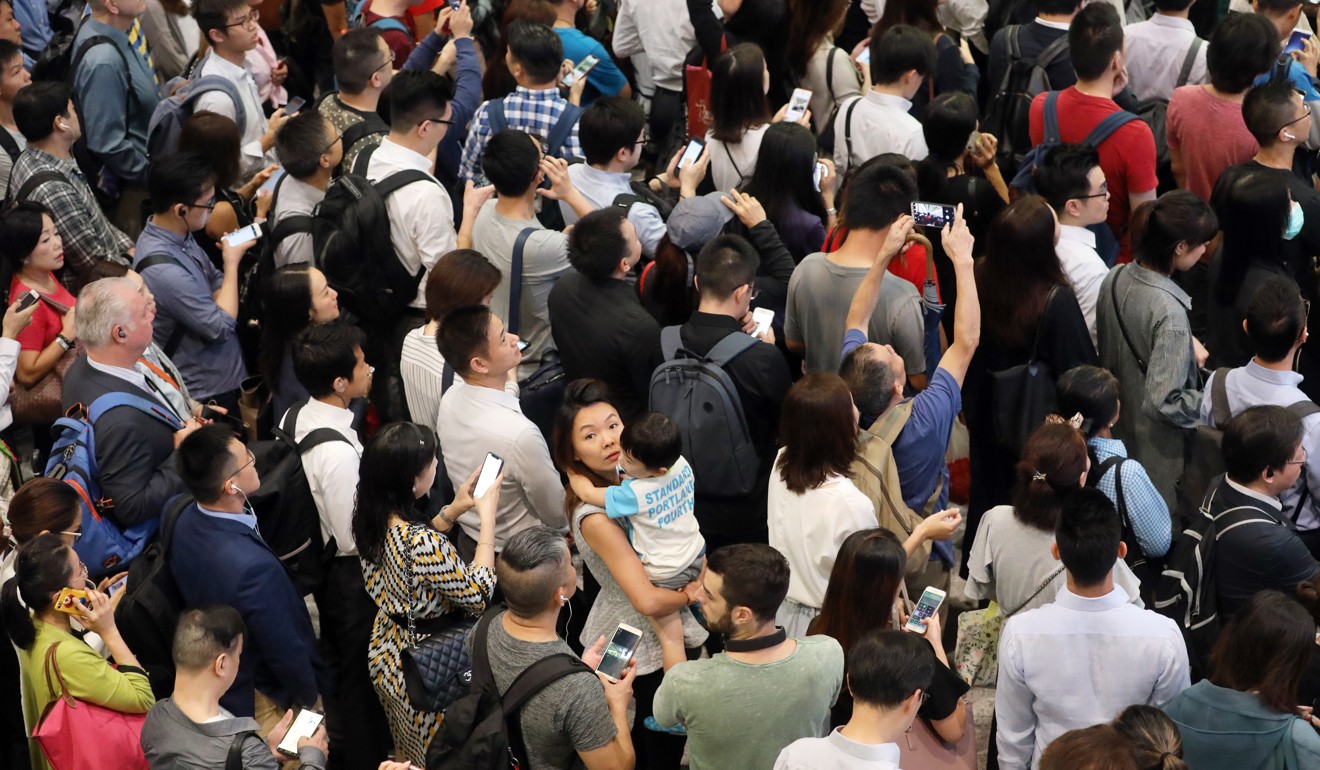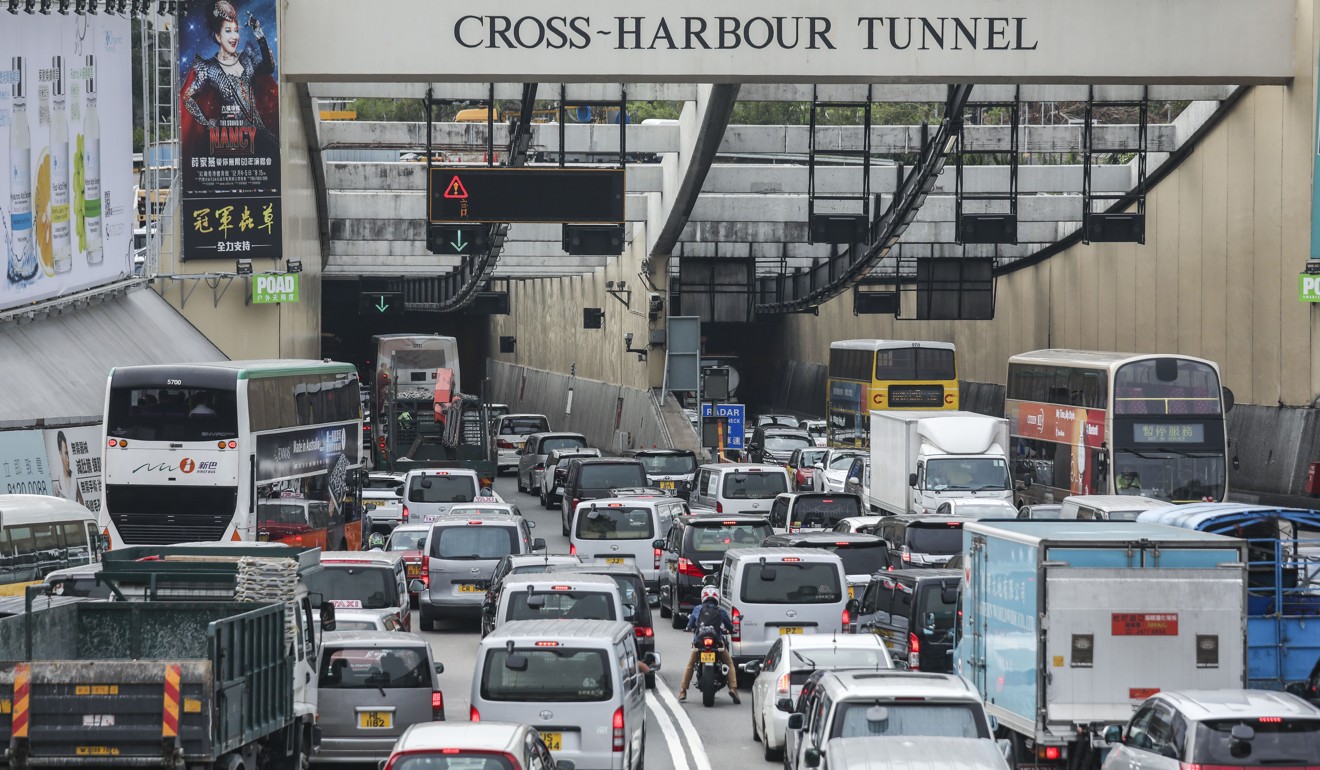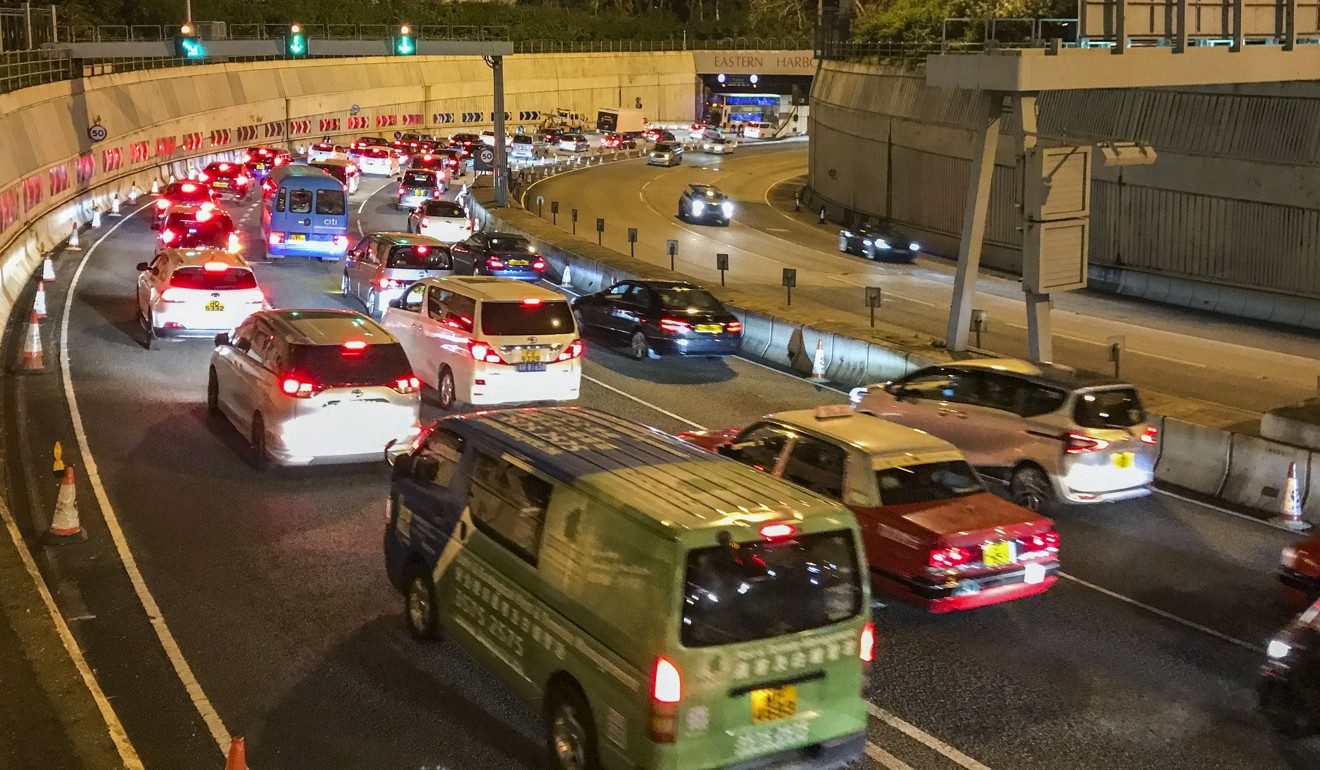
Hong Kong’s chief executive has bravely begun to tackle the city’s ‘untouchable’ issues – starting with tunnel pricing
- In a landmark move, Chief Executive Carrie Lam has laid out a proposal to juggle cross-harbour tunnel fees to reduce perennial snarl-ups
Chief Executive Carrie Lam Cheng Yuet-ngor must take credit for beginning to tackle in her Policy Address some hitherto “untouchable” issues that have sat for decades in her
predecessors’ “too difficult baskets”.
Most obvious is of course housing, but surely maternity leave, and employer
offsets for MPF pension payments must count as serious efforts to break
seemingly perpetual consultation cycles that have persistently kicked the
can down the road on all potentially tough decisions. Who knows, she might
even soon summon the courage to tackle compulsory health insurance, village
housing and electronic road congestion charging.
But meanwhile, on the subject of traffic congestion, her proposals to juggle
cross-harbour tunnel fees to reduce perennial snarl-ups backing from the
Central Harbour Crossing in Causeway Bay back to Central must also be a
landmark.
As a reasonably militant non-car owner who has for the past 25 years
entrusted my commuting life to our world-beating public transport system, I
confess a deep indifference to the angst and frustration of car owners who
winge about the peak hour crawl to work or king’s ransom car-parking
charges. I sit firmly with the 90 per cent of Hong Kong’s 16 million daily
commuters who care much more keenly about the speed and efficiency of our
MTR, the challenge of “bus jams” into Central, and even modernisation of our
trams.

But tackling the gridlock around the Central Harbour Tunnel must be in the
interest of us all, and credit to Carrie Lam for at last biting the bullet.
Whether the exact arithmetic of the new charges successfully realigns
cross-harbour traffic flows, persuading car owners to use more often the
majestically underused Western Harbour Crossing, only time will tell. But
simply getting the tunnel owners to agree to adjust charges is a significant
achievement. Combine it with an electronic road pricing ring around Central,
and we might at last make serious progress in reducing traffic congestion.
To be fair, complain as we do about traffic congestion and soaring car
ownership, Hong Kong’s traffic problems pale when compared to most of the
world’s big cities. Our draconian pricing regime that has kept cars
expensive, made petrol and diesel prices among the most expensive in the
world, and made the cost of car parking prohibitive, has powerfully
restrained the growth in car ownership.

According to World Bank numbers, only 77 people out of every 1,000 in Hong
Kong have a car. Worryingly, this is 40 per cent up over the past decade,
but compares well with most of the world. For example in the US, there are
910 cars for every 1,000 people, 774 in New Zealand, 591 in Japan, 469 in
the UK and even 231 in mainland China (now home to the world’s largest car
population - above 300 million). Even meticulously managed Singapore has a higher
level of car ownership (149 per thousand).
This has only been possible because of the massive and timely investment in
public transport, in particular the MTR and the very smart policy of
building our new towns around MTR stations. While the MTR nowadays carries
an average of 5.3 million commuters every day, with buses and minibuses carrying a
further 2.7 million, our 560,000 cars account for about 1.2 million commuters a day.
Problematic is that a significant number of these try to squeeze through the
cross harbour tunnels. Note that Hong Kong has, in total, 16 road tunnels,
but most of our problems focus on the three that help us get to and from
Hong Kong Island. According to Transport Department data, buses carry 71 per
cent of the people who travel by road every day, but account for less than a
quarter of the traffic, while cars carry 16 per cent of the road travellers
while accounting for up to 70 per cent of the traffic volume.
I have always queried how strongly the different cross harbour tunnel
charges influence which tunnel a car-owner chooses (around three quarters of
all vehicles using the tunnels are private cars). After all, for most car
owners, paying average annual car-operating expenses of over HK$160,000 (US$20,405), and
using a car because they prefer to, not because they need to, I have always
been tempted to think they are more driven by convenience and speed than the
dollar cost of a tunnel fee.
But Transport Department pilot studies going back to 1983 have consistently
showed that changing the tunnel fees does indeed change behaviour, at the
same time improving peak hour travel speeds through Central above the
present average 20 kilometres per hour, and reducing air pollution.
So let’s be optimistic and hope that her new tunnel fee regime does indeed
persuade more car owners to use the Western Harbour Tunnel. And let’s hope
that the elimination of fees on buses will keep bus fares down, and induce
at least a few of present car-owners to prefer the bus. Combine this with
the completion of the underground Central bypass, and eventual opening of
the Sha Tin-Central MTR line, and we might for the first time in decades see
congestion relief along the north of Hong Kong Island.

For me, the most important need is for the government to stand firm in its
determination to keep car ownership prohibitively expensive. In many
countries across the world, car ownership is a need rather than a want,
because of the awful inadequacy of public transport choices. Intelligent
pre-emptive development of excellent public transport in Hong Kong has kept
car ownership firmly constrained, as a status symbol and largely
self-indulgent want rather than a family need.
Long may this remain true. If tinkering with cross harbour fees helps to
keep our buses moving through the tunnels more speedily, and keeps
street-level pollution down, so much the better. Why we need to wait until
January 2020 so see the changes introduced I do not know. Surely the sooner
the better.
Next, we need electronic congestion charging (the latest government
consultation has estimated that 40 per cent of car trips in the morning peak
may be diverted to public transport by congestion charging, with a further
10 per cent changing the time of travel), rules to stop lorries delivering
stuff during peak travel hours, and perhaps some more park-and-ride hubs.
But perhaps Carrie Lam can only be expected to tackle so many untouchable
issues at any one time.
David Dodwell researches and writes about global, regional and Hong Kong
challenges from a Hong Kong point of view

